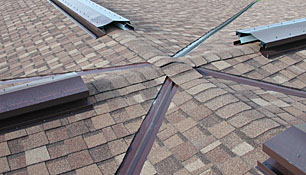Tips for choosing the ideal roof type for your dream home
 Take a moment to consider this question. How would you want your dream home to look? Tall ceilings? A large kitchen? Open floor plan? Exquisite rooms? Landscaped front yard? Plenty of natural light? What else would you want?
Take a moment to consider this question. How would you want your dream home to look? Tall ceilings? A large kitchen? Open floor plan? Exquisite rooms? Landscaped front yard? Plenty of natural light? What else would you want?
But you know what? None of this will matter if your home doesn’t look aesthetically pleasing from the exterior. And there’s no way your building would look appealing without the ideal roof type.
The roof defines the overall look and style of a home. Given the many designs and shapes of roofs in the market, how do you select one that’s the perfect fit for your home? Let’s delve into some of the factors to consider.
By first, let’s look at the types of roofs.
Types of Roofs
Gable roof
These are classic pitched roofs with two sloping sides that originate from the center. For easy reference, they are the roof type most people pen down when asked to draw a house.
Gambrel roof
A gambrel roof is usually a symmetrical two-sided roof with two slopes on each side. The upper slope is positioned at a shallow angle, while the lower slope is steep.
Flat roof
As the name suggests, a flat roof is usually flat! However, most flat roofs are built to have a slope of up to 10 degrees to allow for better drainage.
Skillion roofs
This a distinctive roof consisting of only one isolated unvarying surface, as opposed to standard roofs that have two sloping sides which meet in a ridge at the center of the building.
Butterfly roof
Also known as a V roof, a butterfly roof is characterized by an inversion of a standard roof form, with the two roof surfaces sloping down from the opposite edges to a valley in the middle of the roof.
Types of Roof Materials
Some of the most common materials used for building roofs include:
- Asphalt shingles
- Clay/concrete tiles
- Metal
- Slate
- Wood shakes
- Synthetic tiles
Factors to Consider When Choosing Roof Design
Location
The primary purpose of a roof is to protect your home from water, snow, wind, and other weather elements. And as you know, weather conditions vary vastly from location to location. That’s why you need a roof that’s perfectly suited for handling the range of weather conditions in your region.
For instance, a gable roof is ideal for regions with a lot of snow or water so the water can run off faster.
What’s more, you have to decide if you want your roof design to match the prevalent style in your neighborhood or if you want to be the oddball. But remember, it’s all about what you want.
Consider your house structure
Your roof design must complement the building. For instance, if you’re planning to change the roof of an old farmhouse, a modern flat roof might look kind of odd. Instead, a gable or gambrel roof might be better suited.
Determine other functional purposes you what to achieve with your roof
As an example, if you want a great deal of extra living space, mansard roofs are idle. This space can be used as a full attic or living quarters (commonly called a garret).
Another example. Flat roofs are usually used in commercial roof designs because they provide adequate space to place HVACs on the roof. Flat roofs are also conducive to installing PV solar panels for a more energy-efficient home.
Define your budget
It doesn’t matter how grandiose of a plan you have; if you cannot afford it one way or the other, then you cannot make it a reality. That’s why it’s important to define your budget. That way, you set a constraint for what’s possible and what’s not.
To give you a bit of perspective, the national average roof cost is between $5,100 to $10,000, but costs can easily climb to over $30,000 depending on what you want to accomplish.
Check the building codes
The purpose of building codes is to provide minimum standards to safeguard life, health, property, and public welfare by controlling and regulating the design, construction, and maintenance of buildings and structures within a district/region.
That’s why you need to check if there are rules when it comes to the type of roof design and materials that are permissible in your region.
Get Several Quotes
Installing a new roof requires sound technical expertise, so it might not be ideal as a DIY project. But before you work with any roofing company, ensure you get quotes from several companies so you can compare costs and timelines. But more importantly, assess their previous works as well as overall customer satisfaction with former clients. That way, you get to work with the best.
Contact us here today for more information. We look forward to working with you on your next roofing project.

